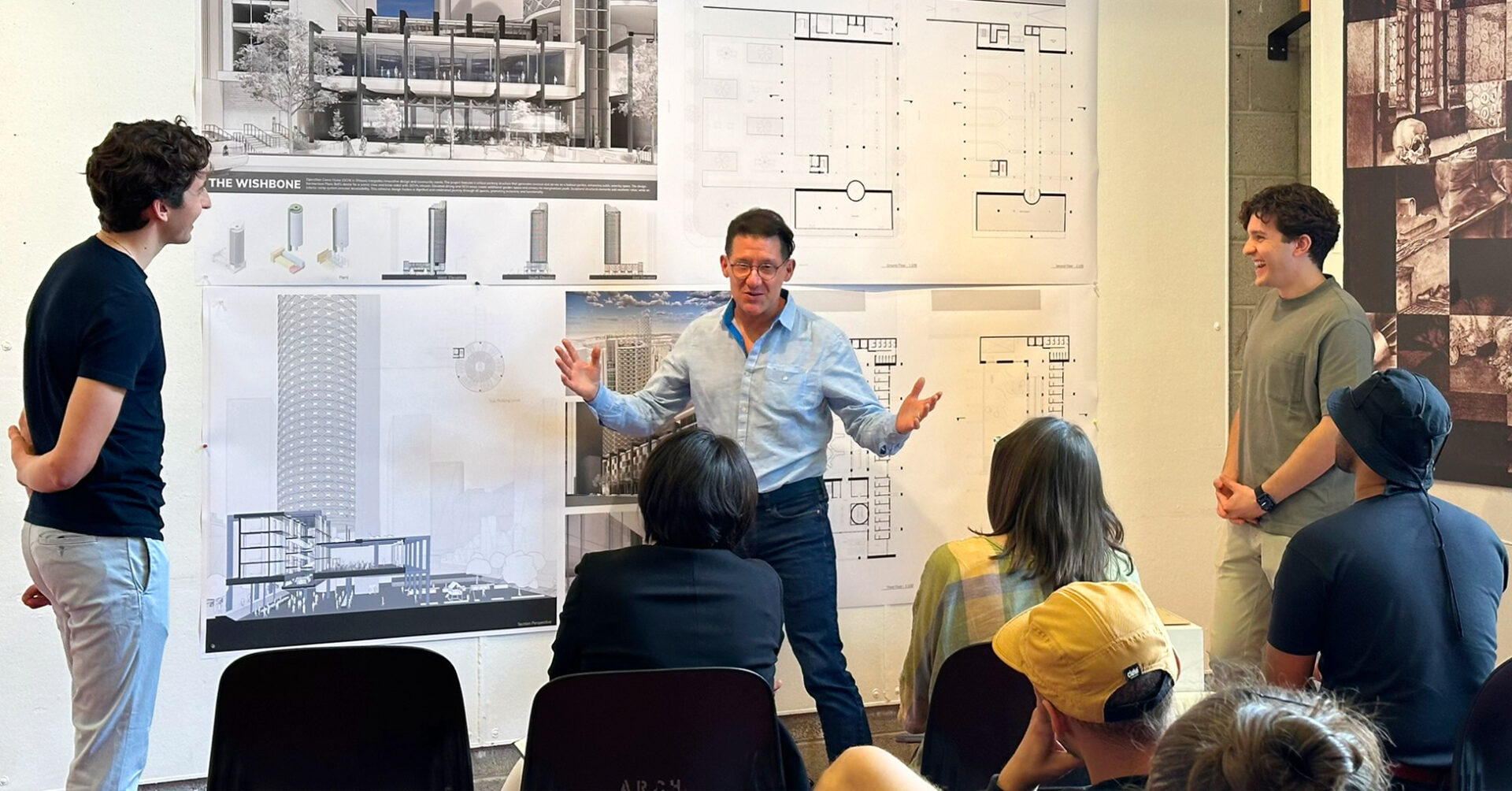Above: Paul Kariouk provides feedback to Simon Martignago (far left) and Anthony Papini (right) as classmates look on.
Kariouk Architects is thrilled to announce that as of July 1, 2024, Paul Kariouk was promoted to Full Professor at Carleton University’s Azrieli School of Architecture and Urbanism. He will continue in both of his roles as an educator and as principal of Kariouk Architects, and endeavour to expand on his longstanding and widely recognized record of leadership and service to his students, the school, the profession, and the broader community.
In 2001, Paul moved to Ottawa from New York City to become a teacher at Carleton University. In total, he has spent 23 years balancing his commitments to his students with a second full-time commitment to leading an award-winning architecture firm. He continues to be the only architect in Ottawa who has earned a full-time academic role at a major educational institution like the prestigious Azrieli School.
Commenting on his promotion, Paul said, “I would like to thank the promotions committee for this great honour and profound responsibility. Since joining the school, I have loved every moment of teaching and research.”
While his two roles keep him extremely busy, Paul considers them synergistic. “My professional office competes for commissions for projects, many of which allow me to explore the structural capabilities of more environmentally-friendly materials like cross-laminated timber (CLT), or to design to accommodate complex terrains and preserve existing habitats. In an accredited program that is training future professionals, I believe it is vital to have role models immersed in that practice.”
He continued, “Kariouk Architects also pursues funded installations and architectural ‘ideas’ competitions. Because they are untethered from the realities of codes and budgets, this work provides a social and political critique of the greater architectural/urban environment. This underpins all my coursework that is intended to guide my students to be worthy stewards of a world that so desperately requires honourable leadership.”
In both roles, Paul is committed to environmental stewardship. He advocates the use of both high-tech and low-tech means of reducing our consumption of natural resources and believes that environmentally responsible and ethical design begins with efficiency. He favours project designs that require less space than clients originally imagined, and reduce both building costs and the depletion of resources.
Summing up, Paul said, “Architecture is not art; it is a costly, difficult pursuit that must yield shelter in numerous forms, often for people who are not the direct client. That is, most buildings are for users whose voices are never heard, who are not in any way able to articulate real, let alone abstract, human needs. The lesson of my work, including through built installations such as the (a)way station, for students who will one day be shaping our cities, is to seek beyond the apparent and to comprehend that the de facto architectural client is often not the commissioner of the work.”

